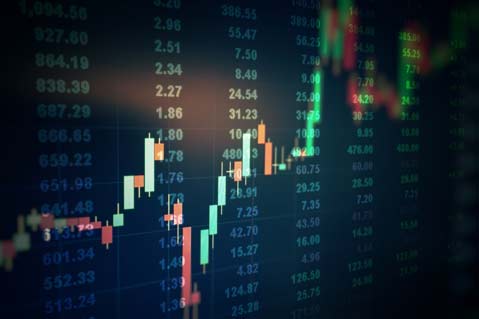News March 21, 2017
Will Rising Interest Rates Impact The Promo Industry?
In a bid to keep inflation in check and adapt to an improving economy, the U.S. Federal Reserve voted to raise interest rates last week at its Federal Open Market Committee (FOMC) meeting. While the elevation of the U.S. central bank’s target range for the federal funds rate to 0.75% to 1% was widely expected, some financial gurus, including an FOMC member, are apprehensive about the increase. But how will the current rate uptick impact the promotional products industry?

Probably not much, advertising specialty executives say.
“The overall market and business mood seems so positive, that I don’t expect rising interest rates to have a significant impact on our industry in the near term,” said Greg Muzzillo, founder of Top 40 distributor Proforma (asi/300094). Mark Ziskind expressed similar sentiments. “It’s inconsequential,” said Ziskind, chief operating officer at Top 40 distributor CSE (asi/155807). “Despite the slight rate increase, the cost of money is still at a historical low. “ Meanwhile, Marc Simon said the interest rate rise could be a bellwether for positive things to come. “The Fed’s decision to raise rates is a further indication that our economy is recovering and growing at a healthy pace,” said Simon, CEO of Top 40 distributor HALO Branded Solutions (asi/356000). “The decision may serve to fuel further growth in the economy. And that would be very positive for the promotional products industry.”
While promo executives anticipate that the rate rise won’t negatively affect sales, the question remained whether the higher cost for cash could lead to a decrease in the mergers and acquisition activity that has been robust in the industry through the first quarter of 2017.
Simon, who has led the successful acquisition and integration of about 20 distributors since joining HALO 16 years ago, says that in the short term the rate rise is unlikely to stifle many M&A deals. “Although significantly higher interest rates may eventually lead M&A activity in our industry to slow down, the modest increases announced and previewed should not have more than a minimal effect on the pace of consolidation,” Simon said. “And, those acquirers who hedge their interest rate exposure will mitigate most if not all of that impact.”
Muzzillo offered additional perspective. “On the one hand, you might think (rising interest rates) could slow deals,” he said. “However, for companies in financial difficulty, rising interest rates might force or motivate them to sell. I’d expect M&A activity to continue at its current pace or possibly see a slight increase.”
To help recovery from the Great Recession, historically low interest rates have been in place since 2007. Only three times in the last decade has the Fed raised rates – last week, in December 2016 and in 2015. Each time, the rate increased by a quarter point. Now, with the economy reportedly nearing full employment and consumer price inflation believed to be around the Fed’s annual 2% goal, the central bank could hike the federal funds rate twice more this year. The Fed’s decision last week to increase rates “reflects the economy’s continued progress toward the employment and price-stability objectives assigned to us by law,” said Federal Reserve Chairwoman Janet Yellen. It also “reflects our view that waiting too long to scale back some accommodation could potentially require us to raise rates rapidly some time down the road, which in turn could risk disrupting financial markets and pushing the economy into recession.”
Nonetheless, not everyone on the 10-member FOMC was in favor of the increase. Neel Kashkari, the president of the Federal Reserve Bank of Minneapolis, voted to postpone the rise. In a statement, he said that the U.S. does not yet appear to be meeting its goals for 2% inflation and full employment. “The key data I look at to assess how close we are to meeting our dual mandate goals haven’t changed much at all since our prior meeting,” when the Fed voted unanimously to keep rates the same, Kashkari said in the statement. “We are still coming up short on our inflation target, and the job market continues to strengthen, suggesting that slack remains.”
Writing for The Washington Times, economist Peter Morici predicted that the rate increase will lead to higher bank fees and auto loans, but said that mortgage rates and economic growth will not be much affected.
